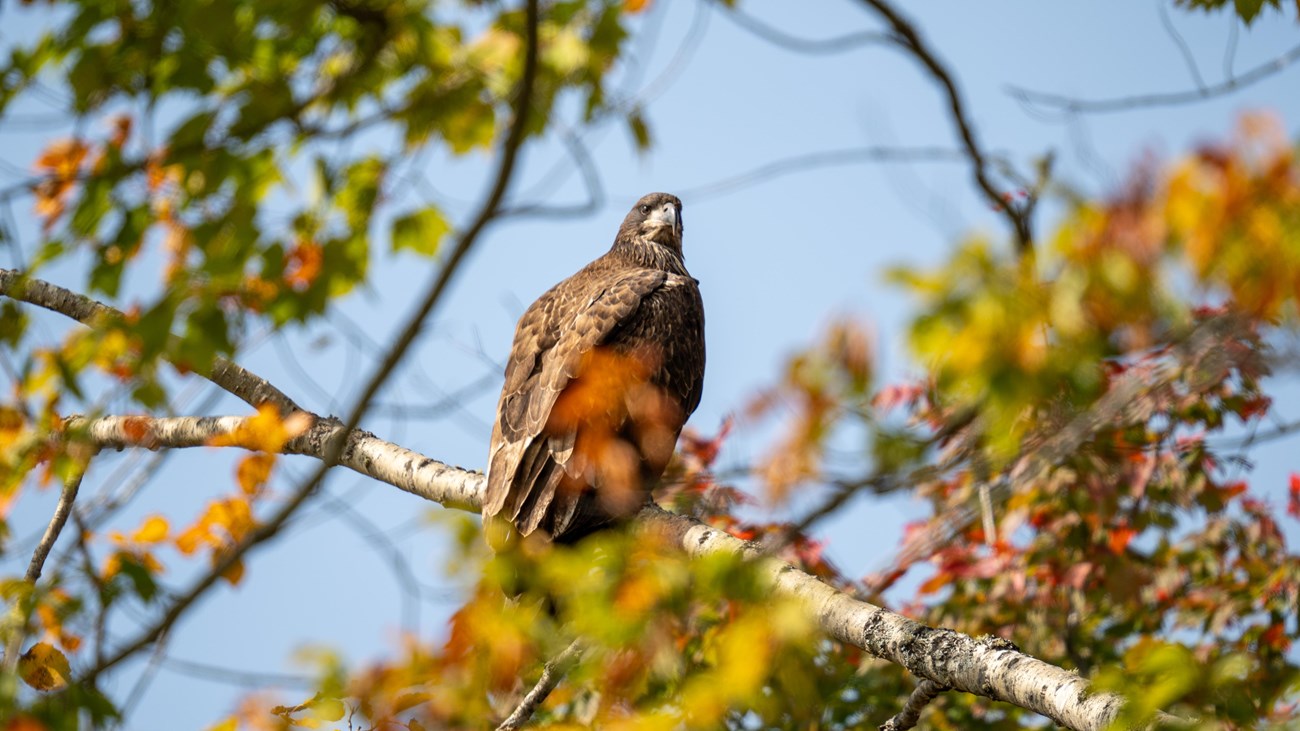Last updated: August 6, 2024
Thing to Do
Birding In The Southern Section

NPS / Gin Majka
Katahdin Woods and Waters National Monument provides important and diverse breeding habitat for many species of birds. Birding is an activity that can be enjoyed year-round, however, the southern section is difficult to access during the wintertime. Be sure to check current conditions before visiting.
You don’t have to be an expert to enjoy birding! Bring a field guide that is specific to the local area and/or download a bird identification app onto a smartphone before visiting to help support your experience. Some birds that can be seen at the monument are warblers, sparrows, waxwings, loons, bald eagles, owls, spruce grouse, and many more! Many migratory birds leave the monument in the winter, but birds like the spruce grouse, boreal chickadee, and Canada jay remain. Here is a list of species you may be able to find within the monument. Binoculars and/or a camera with a zoom can help give you a closer look. Remember, help keep the wildlife safe by respecting their space when viewing.
Recommended spots for birding:
Lynx Pond
Lynx Pond (45.87025,-68.70733) offers ADA accessible parking and trail. The habitat in the area is good for migrant songbirds, including yellow-bellied and olive-sided flycatchers. The pond is habitat for waterfowl including American black duck, common goldeneye, ring-necked duck, and hooded merganser.
Deasey Ponds
Park at the Deasey Ponds Parking Lot (45.87074,-68.68239) for a walk to the Deasey Ponds. Keep an eye out for ruffed and spruce grouse, warblers, and finches in the forested areas. American bittern, wood ducks, common loons, and other water birds may be spotted at the pond.
Barnard Mountain
Start the hike up to Barnard Mountain at (45.91510,-68.76034) the trailhead parking area. The hike offers a variety of habitat for dozens of species of breeding and resident birds.
Katahdin Loop Road Overlook
Songbirds and mourning warblers may be heard singing at the overlook area. Bald eagles, hawks, and vultures may be seen soaring over the treeline as you enjoy the view of neighboring Mt. Katahdin. You can find picnic tables at this location.
What Can I Do With My Observations?
While watching birds can deepen our connection to nature and our community, it can also help scientists conserve birds—if you share what you see. Learn more about sharing your data and observations.
The roads, trails, and parking areas within the monument are mostly a mix of gravel, dirt, and rocks. Uneven terrain may be present in these locations. Certain areas can be muddy and/or flooded, especially during the spring. The monument does not clear trails of snow and ice. Many areas are multi-use, be aware of bikes.
